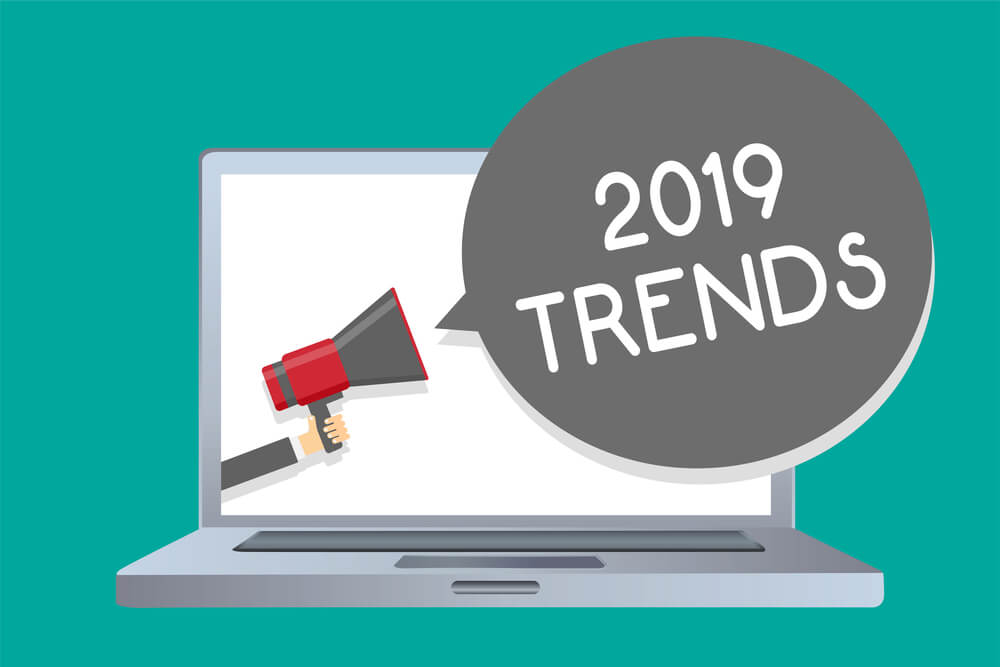As digital marketers who work in an ever-changing environment of new ad targeting, content writing and social media trends, it only makes sense to plan ahead for what is predicted to be everyone’s strategic priority in the upcoming year. Whether it’s taking a feature we already know and love and enhancing it for better results, or introducing a new tool to our client, here are the top five marketing trends for 2019 that stood out to us.
Audience-Targeting over Keyword-Targeting
While the idea of using personas to define a target audience is neither new nor revolutionary, there has been a shift in strategic thinking that has made this concept even more commonplace within most marketing and advertising agencies.
Audience-targeting is just as it sounds. It’s focusing on the interests, demographics, behaviors, and context of the consumers that you’re trying to reach. Where keyword-targeting focuses on product-related search inquiries, audience-targeting focuses on the consumer behind those inquiries who would be most receptive to your advertising and messaging.
Founder of SavvyRevenue, Andrew Lolk, has said that “Keywords will be important, but audience-targeting on the search network will (in 2019) be of equal importance for securing high performance.”
For instance, if you have a summer camp for recent high school graduates, it’s more important to break down the location (mileage from camp) and age (around 17 or 18 years old), rather than just using the keywords: outdoor, high school, camping. It’s all about getting to know your audience better.
Cross-Device Attribution
Thanks to connected networks like Facebook’s social media platform and Audience Network, as well as Google’s Search, Display and Partner networks, advertising and marketing professionals are able to reach consumers at every stage of their journey with relevant and actionable messaging. Not only will Marketers be able to see which creatives are converting the most, but also which device or device-combinations are receiving the most conversions as well.
With the release of Facebook Attribution in October of 2018, all advertisers are now able to target and retarget individuals, anonymously, across devices, Facebook apps and the Facebook Audience Network. So as a consumer goes about their day, going from smartphone, to laptop, to tablet, to smart TV, they can be served ads that are both targeted and tracked within the Facebook Ads Manager under Cross-Device Reporting.
Google is able to generate similar reporting for cross-device activity through the use of its Chrome web browser, which is available on most devices and accounts for 62% of web traffic. Users with a Google email address (Gmail) are able to login to the Chrome browser, giving Google the ability to track their activity.
Knowing which message resonates with your target consumer is a great thing. Knowing which platform would be more likely to cause them to convert is even better! That’s what Cross-Device Attribution lets marketers find out.
Optimizing for Voice Search
Voice search has made it easier for consumers to find time-sensitive and contextually-relevant information that they can use immediately to make purchasing decisions.
According to a comScore report, “50% of all search will be voice searches by 2020.” Many of these searches involve finding out information about local businesses, such as directions, hours of operation, a phone call, a menu and even to hear recent ratings and reviews.
This is why it is important to optimize your brand’s website and online profiles for voice search by making sure that all information can easily be found by Google’s website crawlers. In fact, the convenience of having a hands-free search tool has enabled more consumers to make informed decisions, resulting in 17% of smart speaker owners to search for product information and 12% searching for brand comparisons.
Chat-Bots
As the Internet of Things continues to give consumers more independence and power over their own consumer journey, brands are having to develop strategies for almost 24/7 opportunities for engagement and message delivery. Chatbots are an automated way to bridge the gap between the consumer and your brand’s information, products and services.
In a highly-mobile digital environment, Chat-bots seamlessly integrate into your brand’s website and social profiles through messaging platforms and website widgets. According to one report by Oracle, 80% of surveyed businesses have either already implemented or plan to implement a Chatbot into their customer experience strategy by the year 2020.
Perhaps one of the key benefits of having a chatbot is that it gives potential consumers quick access to information and support, from a friendly persona, so that every interaction is optimized for success.
Social Media Stories
If customers are on their phone, they’re most likely on a social media app. According to Mary Meeker’s 2018 Internet Trends Report, the average adult spends 5.9 hours per day with digital media, up from 3 hours a day in 2009.
As marketers, it’s important to use social media platforms to showcase our client and to stay relevant with each post. Not only does the “Live” feature continue to be a trend, but consulting firm Block Party admits that social media “Stories” are becoming more popular than ever–growing 15 times faster than feed-based sharing.
Sharing stories has exploded on Snapchat, Instagram and Facebook. Whether it’s the real-time content (a snippet of a concert, parade or game), getting more of a behind-the-scenes-view of the destination (a tour of a hotel or attraction, or even a one-on-one interview), or being able to go back and view it within 24 hours, consumers constantly want to feel included, which makes posting stories work well for a large audience at a given time.
